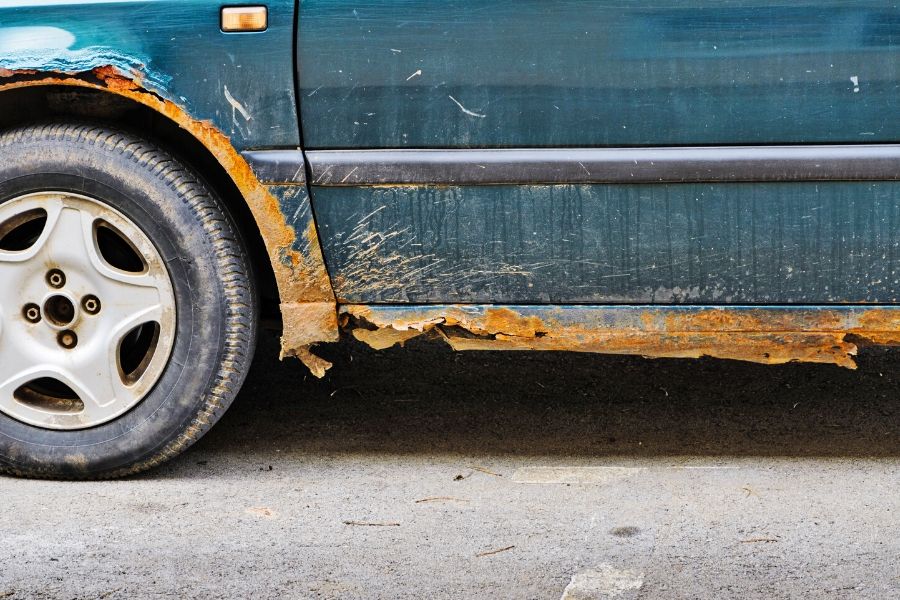Common Mistakes to Avoid When Using Wheel Rim Protectors (And How to Fix Them)
Wheel rim protectors are slim guards—usually made from aluminum alloy, PVC, or high-impact rubber—that sit on the lip of your wheel to shield against curb rash, stone chips, and light scuffs. Besides preventing expensive cosmetic repairs, quality protectors add a neat styling accent that can highlight your wheels’ contours.
Yet many drivers buy a set, slap them on, and assume the job is done. Within weeks, they notice peeling edges, water-trapped corrosion, or worse, protectors on the driveway. The culprit is almost always an installation or usage error.
Below is a deep dive into nine common mistakes enthusiasts make with rim protectors and the simplest ways to fix—or outright prevent—them.
1. Choosing the Wrong Size or Type
The mistake
Buying a “universal” protector without confirming diameter or profile often leaves small gaps or forces the strip to stretch. Under high-speed centrifugal force, that mismatch can fling the protector off the wheel.
How to fix it
- Measure twice – Record the wheel’s outer diameter in inches or millimeters (e.g., 20 in / 508 mm).
- Check spoke clearance – Some low-profile protectors sit deeper than others; ensure spokes won’t interfere.
- Match adhesive style – Clip-on versions suit thick lips; 3M-taped profiles work better on narrow lips.
2. Skipping a Proper Wheel Clean
The mistake
Dust, brake residue, and road tar from a micro-layer that weakens the adhesive—even a brand-new car ships with packing wax.
How to fix it
- Degrease – Use isopropyl alcohol or a dedicated wheel prep spray.
- Clay bar – Pull out embedded iron particles and tar spots.
- Dry thoroughly – Moisture under the tape is a guaranteed adhesion failure.
3. Ignoring the Manufacturer’s Instructions
The mistake
Rushing through a “five-minute install” video and ignoring dwell times. Many OEM and aftermarket kits specify a two-step adhesion promoter or a 30-minute seat time before driving.
How to fix it
- Read the leaflet from start to finish—yes, the small print matters.
- Stage the car indoors if possible; keep ambient temperature within the adhesive’s range (usually 18 – 30 °C / 65 – 86 °F).
- Set a timer for the recommended cure period.
4. Using Low-Grade Adhesive
The mistake
Some kits include generic foam tape that degrades in heat. After a summer highway run, the strip starts sagging.
How to fix it
- Upgrade to VHB-grade 3M tape—look for the 5952 or 4991 series rated to 149 °C / 300 °F.
- Avoid silicone sealants; they remain flexible but lack shear strength.
5. Washing or Driving Through Water Too Soon
The mistake
A fresh install looks solid, so the owner heads straight to an automatic wash or rainy commute. Water seeps under the not-yet-cured bond.

How to fix it
- Wait 24–48 hours before any moisture exposure.
- Plan—install on a dry, low-humidity day.
- Use a gentle hand wash first, avoiding pressure-washer nozzles near the lip.
6. Treating Protectors as Crash-Proof Armor
The mistake
Drivers get bolder near curbs, thinking the protector is a sacrificial shield. Hard impacts can still nick the wheel and fracture the strip.
How to fix it
- Stay a tire’s width from curbs when parking.
- Use side-mirror tilt-down memory to watch the rear wheel.
- Remember: protectors soften minor grazes, not full curb impacts.
7. Skipping Regular Inspections
The mistake
UV light, de-icing salts, and track-day heat cycles age the material. Owners rarely kneel to notice fraying edges.

How to fix it
- Run a finger around the rim for lifted sections for the monthly check-up.
- Replace damaged segments immediately; most kits sell add-on lengths.
- Re-torque clip-on variants if they use set screws.
8. Mixing Wheel and Tire Chemicals
The mistake
Spraying wheel dressings or tire shine loaded with petroleum distillates can soften PVC or rubber protectors, turning them cloudy or brittle.
How to fix it
- Read product labels; avoid solvent-based cleaners near the protector.
- Mask the wheels when applying tire gels.
- Rinse thoroughly if any overspray occurs.
9. Buying Bargain-Bin Products
The mistake
A $10 generic strip may look similar online, but cheap PVC yellows shrink and lose adhesion quickly. Worse, its rough edge can chafe clear-coat.
How to fix it
- Research the brand—look for lab-tested temperature and UV ratings.
- Scan verified reviews on forums or retailer sites; ignore unverified star floods.
- Invest once—a reputable kit may cost more but saves a $150 wheel repair.
Conclusion
Wheel rim protectors work only as well as the care that goes into selecting, installing, and maintaining them. Start with a protector sized precisely for your wheels, prep the surface like a pro detailer, and respect cure times. Treat the protector as a safety net—not an invitation to kiss every curb—and run monthly inspections to spot wear before it spreads.
A high-quality rim protector can keep your wheels pristine for years, preserving both resale value and curbside appeal. Skip steps, and you’ll spend more time re-taping strips than enjoying the open road—so choose wisely, install meticulously, and drive confidently.
